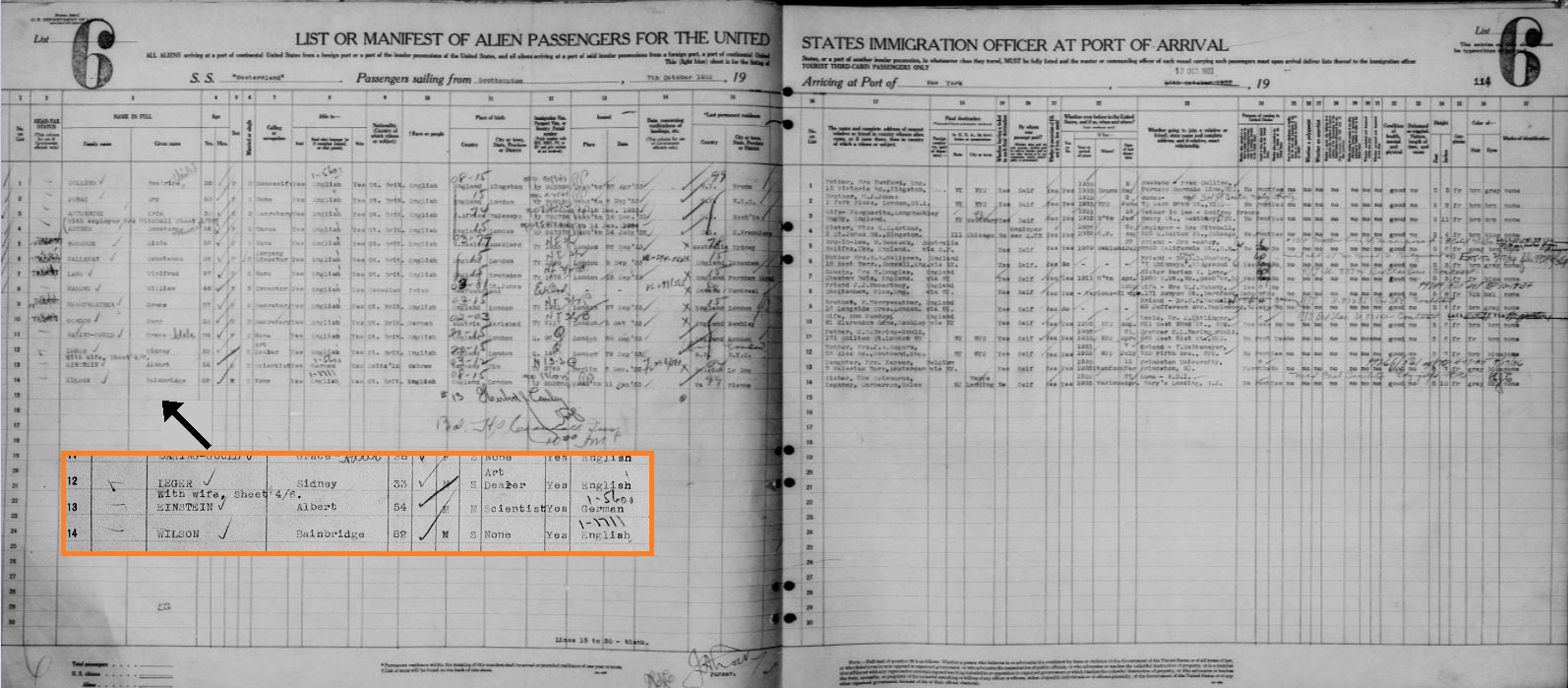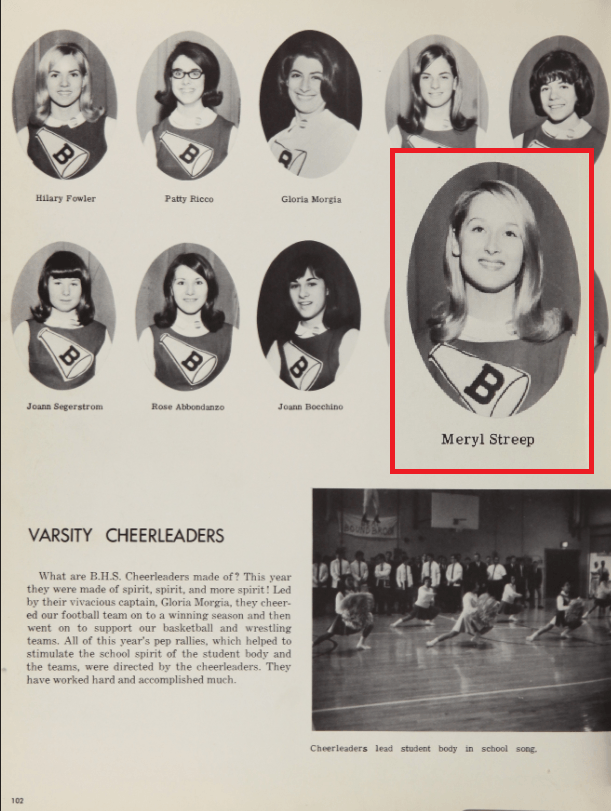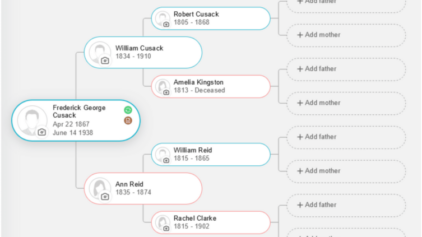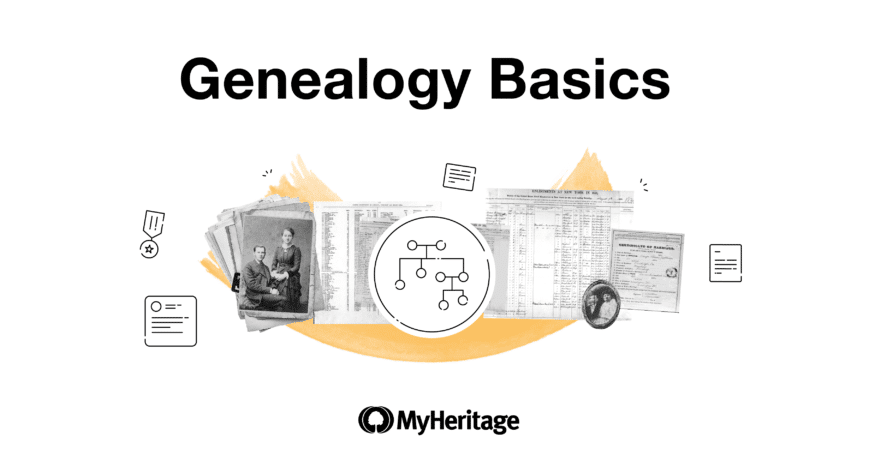Back to 1600’s. My father was a Bye from England.
Genealogy Basics Chapter 2: Build a family tree in six steps
- By Schelly Talalay Dardashti, Daniel Horowitz, MyHeritage Team ·


The story of your family tree spans centuries and continents. Each family member is their own world, with a lifetime of stories, lessons, and conclusions. With so much information to learn, share, and preserve, how do you know what details to focus on when building your family tree?
In this second post of the Genealogy Basics series — a step-by-step guide to increasing your genealogy know-how — we’ll explore six steps you’ll need to help build your family tree. In Genealogy Basics Chapter 1, we introduced the series and gave an in-depth look at how to interview relatives.
We recommend starting with the following:
1. Name and Surname
Many historical records are searchable by name, and it’s important to remember that people’s names change – for a variety of reasons – over their lives. In many cultures – but not all – a woman takes her husband’s family name when she marries, and their children inherit that surname, but that’s not true everywhere! In Spain, for example, people maintain the same two surnames (one paternal and one maternal) their entire lives and they’re not allowed to change them, although a recent law allows parents to choose their children’s surname. Sometimes, surnames are rare, may become extinct and difficult to track. In Iceland, a person’s surname is composed of their father’s (or mother’s) first name plus “sson” for a son and “sdóttir” for a daughter, meaning the surname changes with each generation and is different depending on gender!
Our SuperSearch™ tool scans close to 10 billion historical records to help you find more information for any given surname.Another reason someone might change their name is due to immigration. Irving Berlin, one of America’s most famous songwriters, was a Russian Jewish immigrant whose real birth name was Israel Beilin. Jerry Yang, founder of Yahoo!, immigrated to the US from Taiwan as a child, and his name was originally Chih-Yuan. Many immigrants chose a new name to help them blend in better and integrate into the local culture — or to make their name easier for locals to pronounce. However, no immigrants’ names to the US were ever changed at Ellis Island or any other US port of entry. One of the biggest genealogy myths is that immigrants’ names were changed by immigration clerks.
People may also change their names for spiritual or religious reasons, or because they need to hide their identity, or simply because they disliked their original name.
Even more complicated, until the invention of the printing press and the advent of mass media, there were no standard spellings for words or names. That means the same person may have spelled their name differently in different records — and since they usually weren’t the one writing it down, the clerk or scribe may have recorded it inaccurately.
All this may be frustrating for a genealogist. Luckily, MyHeritage’s Record and Smart Matching™ have your back: Our technology recognizes matches even when there are variations, ranging from the simple (such as William vs. Bill) to the far less obvious (such as Alessandro vs. Sasha).
Record Matching™ automatically searches for family members you’ve added to your tree in our huge database of historical records, saving you countless hours of scouring. We’ve also added the world’s first name translation technology for historical records, which means you don’t need to read or understand the record’s original language to find your family members listed in it. This is a game-changer for many aspiring genealogists, who often find themselves hitting a wall when they trace their family back to a country where they don’t speak the language.
Smart Matching™ finds entries in other users’ family trees that match your entries, which can add valuable information to your tree and connect you with other genealogy buffs in your family so you can compare notes.
Make sure to note any additional names the person you’re researching may have used, and always keep in mind the possibility that they may have changed their name when moving from one place or stage of life to another.
2. Dates and Location of Birth, Marriage, and Death Records
Searching for a name often won’t help unless you have at least a rough idea of when and where the person you’re searching for lived — especially if their name is common. Using MyHeritage SuperSearch™, you can look at birth, death, and census records based on an estimate of when and where they were born. Furthermore, you may infer additional information about other family members from dates and locations of family members’ life cycle events. If you have a great-grandparent born in 1903, for example, chances are their parent was born roughly 20-30 years earlier.
3. Education
Knowing about a person’s education can reveal much about their life: What their upbringing was like, occupation (see below), socioeconomic status. Many high schools and colleges keep a record of their graduates and you might be able to find valuable information on your relative from these records. MyHeritage has a whole section of school and university records you can search — including an exclusive US yearbook collection. The yearbook collection contains almost 290 million records, and MyHeritage conducted an exhaustive process of identifying and consolidating the information contained to make things as easy as possible for users. We merged all occurrences of the same name in a yearbook into one record, and made an extra effort to identify the grades of students for some records so we could infer their age and estimate their year of birth.
4. Occupation
Occupations can also provide much information about who the relative was: what was important to them, how and how well they supported their family, and what skills, talents, and property they might have possessed. Many census records include a person’s occupation. Censuses are records kept by a country’s government to keep track of the local population, and they can be invaluable in providing a snapshot of your family the year the census was carried out. The record usually includes names, birth dates, age at last birthday, and current residence as well as occupation — so you might even be able to find in a census record the house your ancestors lived in. Our collection includes censuses and voter lists from North and South America as well as Europe and Oceania.
5. Dates and Location of Immigration
Many of us descend from immigrants. Finding out when and how your ancestors came to live in the place where you were born helps you better understand your own culture, and provides clues where you might look next to go back another generation. Immigration records often mention where the immigrant came from. MyHeritage has a section of immigration and travel records, including passenger and arrival lists from the US, Canada, Europe, Asia, Oceania, and Latin America.

Record of Albert Einstein’s arrival from the Ellis Island and other New York Passenger Lists, 1820–1957
6. Physical Characteristics
Where did you get your blue eyes? Does red hair run in your family? Noting the physical characteristics of your relatives gives a deeper understanding of who you are and why you look the way you do! It also helps to paint a more vivid picture for later generations that may not have had the chance to meet the relative, especially if there are no photographs. Physical characteristics are sometimes noted in military records. MyHeritage offers over 45 million military record collections.
Get to It!
Finding these six building blocks for each relative — names, dates and locations of birth, death, and marriage, education, occupation, immigration details, and physical characteristics — will turn your tree into a vivid family portrait. Get started by writing down the names of all relatives you know about, then list each building blocks and add as many details as you can.
![Family tree: Popular American surnames [Credit: MyHeritage]](https://blog.myheritage.com/wp-content/uploads/surname2.png)












Kathleen Tulip
August 30, 2019
I am stuck now as my Father was illegitimate, I was given the surname of my Grandfather and through DNA I have match with 2 people whose ancestors have the same surname but without a Christian name I can’t seem to go any further.